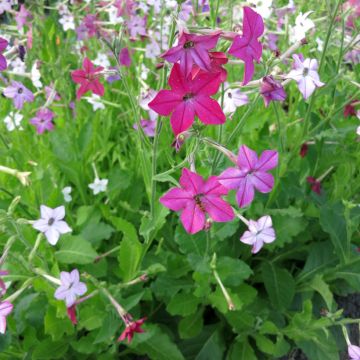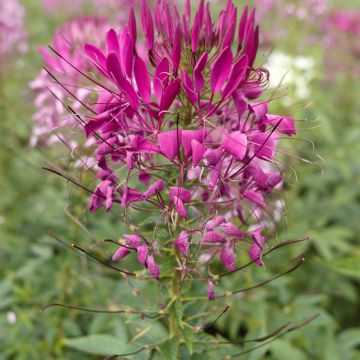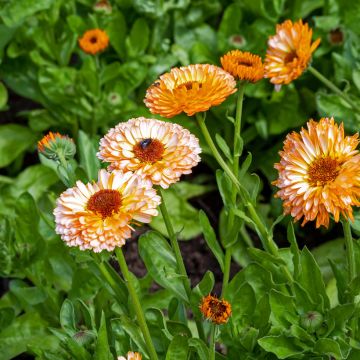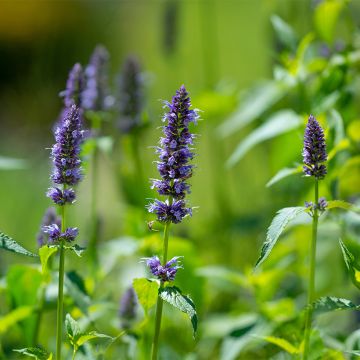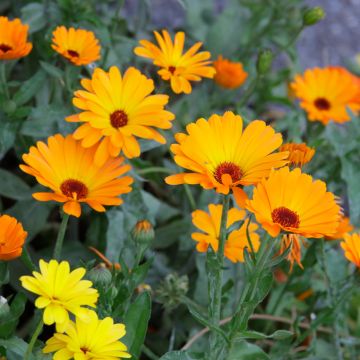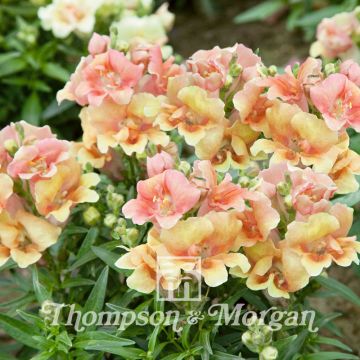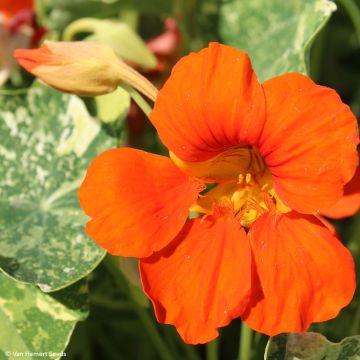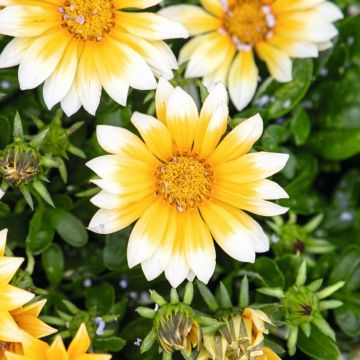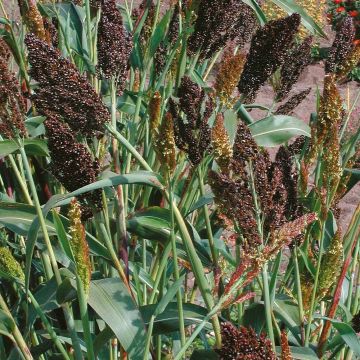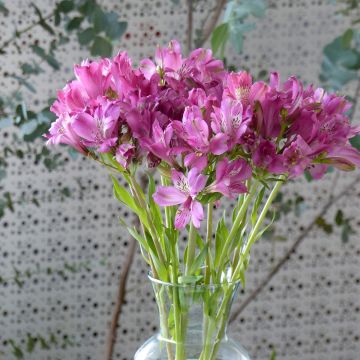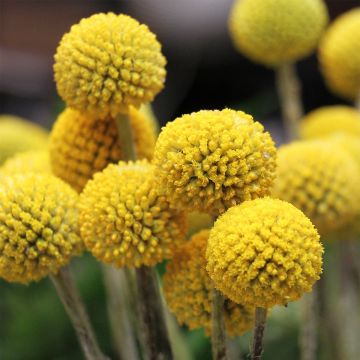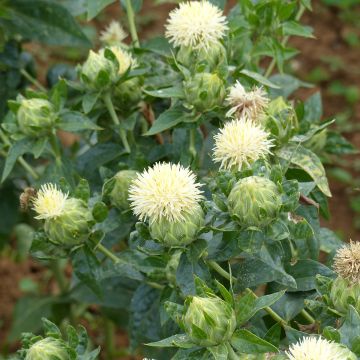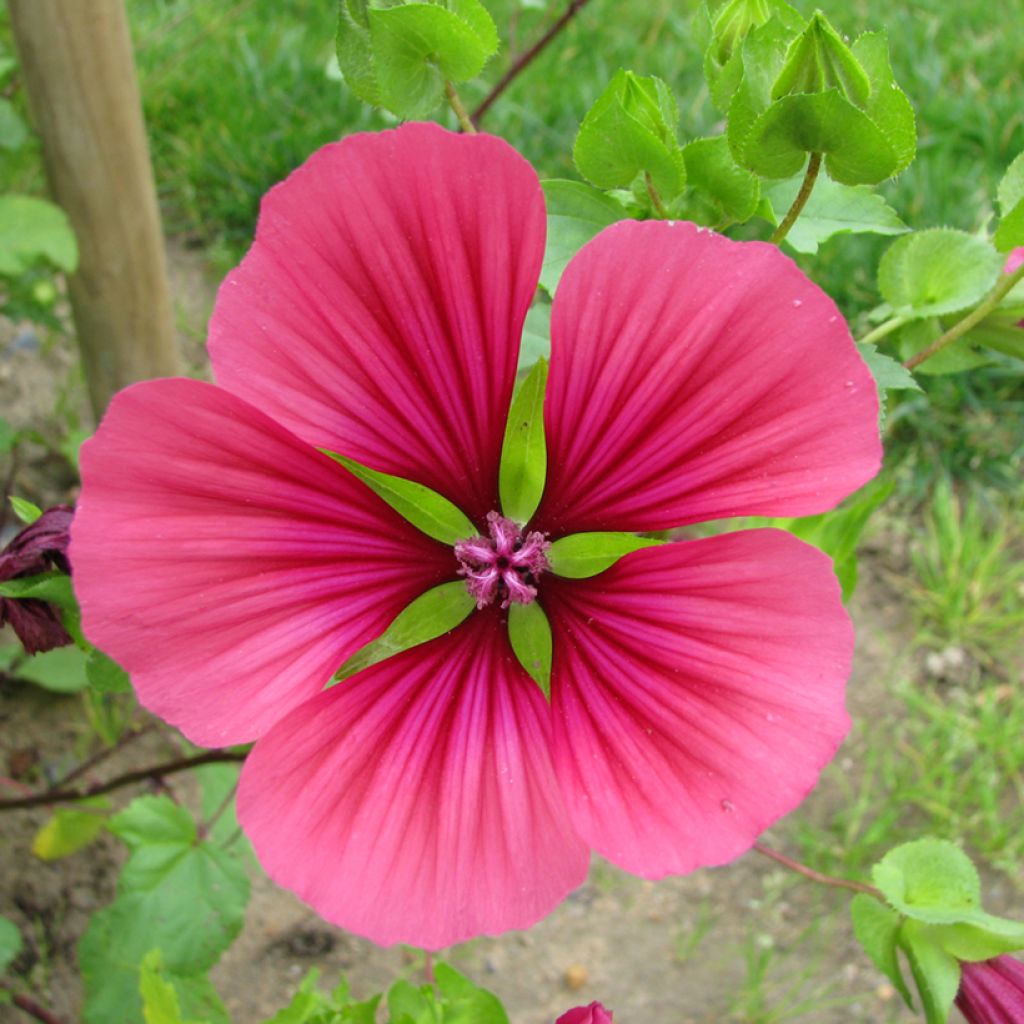

Malope trifida Purple Mix - seeds
Malope trifida Purple Mix - seeds
Malope trifida Mix Purple
Special offer!
Receive a €20 voucher for any order over €90 (excluding delivery costs, credit notes, and plastic-free options)!
1- Add your favorite plants to your cart.
2- Once you have reached €90, confirm your order (you can even choose the delivery date!).
3- As soon as your order is shipped, you will receive an email containing your voucher code, valid for 3 months (90 days).
Your voucher is unique and can only be used once, for any order with a minimum value of €20, excluding delivery costs.
Can be combined with other current offers, non-divisible and non-refundable.
Home or relay delivery (depending on size and destination)
Schedule delivery date,
and select date in basket
This plant carries a 6 months recovery warranty
More information
We guarantee the quality of our plants for a full growing cycle, and will replace at our expense any plant that fails to recover under normal climatic and planting conditions.
Would this plant suit my garden?
Set up your Plantfit profile →
Description
The organic purple mix of Large-Flowered Malope, known in Latin as Malope trifida, is a mixture of varieties with flowers in shades of pink to purple. These annual plants are as easy to grow as lavateras, and their satin funnel-shaped flowers are finer and more elegant. Ideal for quickly filling flower beds, these bushy plants are heat-resistant. Their flowers can also be used to create country-style bouquets. It is best to sow them directly in the ground in spring. They thrive in sunny locations with ordinary, loose, well-drained soil.
Malope trifida is a herbaceous annual plant from the malvaceae family, closely related to mallows, lavateras, and hollyhocks. It is native to the western Mediterranean, particularly Spain. The 'Purple Mix' Large-Flowered Malope mixture consists of bushy and branched plants with a dense habit, measuring 45 to 60 cm in height. Throughout the summer, large, vibrant and graceful, funnel-shaped flowers measuring 5 to 7 cm in diameter appear. The silky texture of the petals enhances their pink to purple hues. The flowers are ephemeral, but the plants produce a profusion of buds that continue to bloom all summer long. The flowering is nectar-rich and is followed by decorative seed heads for dried bouquets. The upright and branched stems are covered with slightly glossy, rounded, and trilobed leaves in a vibrant green. Malopes develop from a taproot, making transplantation a bit tricky with well-established plants. It is therefore best to sow them directly in the ground.
The Large-Flowered Malope brings the garden to life during the peak of summer, despite the heat. This annual plant easily withstands high temperatures and appears even more beautiful and floriferous under scorching sun. Sow malope in flower beds to quickly create large colourful patches. This plant is valuable for filling gaps in perennial and shrub beds, as well as in brand-new gardens. For example, you can combine it with love-in-a-mist, common mallows, echinaceas, and godetias. Their vibrant colours allow them to blend easily into any flower bed or garden. They go perfectly with white flowers, the feathery foliage of bronze fennel, ornamental grasses, or the sky-blue flowers of perennial flax.
Report an error about the product description
Flowering
Foliage
Plant habit
Botanical data
Malope
trifida
Mix Purple
Malvaceae
Malope ciliata, Malope grandiflora, Malope malacoides var trifida
Cultivar or hybrid
Other Flower seeds by variety
View all →Planting and care
Sowing:
Sow Malope seeds from March to April at 20°C, maintaining a temperature of 20°C until germination, then transplant them into the ground as soon as the plants are manageable and all risk of frost has passed. Sowing can also be done directly in place, in April-May, once all risk of frost has passed. Sow the seeds thinly and thin out to leave one plant every 30-40 cm.
Cultivation:
In nature, Malope trifida grows in fields, on rocky slopes or thickets, on limestone soils. It appreciates warm climates and fairly fertile, well-drained soils. Excess moisture makes it susceptible to rust and can even cause it to disappear due to a cryptogamic disease that attacks the plant's collar. It tolerates partial shade, but its habit will be more compact and the plant will be more floriferous in full sun.
Sowing period
Intended location
Planting & care advice
This item has not been reviewed yet - be the first to leave a review about it.
Similar products
Haven't found what you were looking for?
Hardiness is the lowest winter temperature a plant can endure without suffering serious damage or even dying. However, hardiness is affected by location (a sheltered area, such as a patio), protection (winter cover) and soil type (hardiness is improved by well-drained soil).

Photo Sharing Terms & Conditions
In order to encourage gardeners to interact and share their experiences, Promesse de fleurs offers various media enabling content to be uploaded onto its Site - in particular via the ‘Photo sharing’ module.
The User agrees to refrain from:
- Posting any content that is illegal, prejudicial, insulting, racist, inciteful to hatred, revisionist, contrary to public decency, that infringes on privacy or on the privacy rights of third parties, in particular the publicity rights of persons and goods, intellectual property rights, or the right to privacy.
- Submitting content on behalf of a third party;
- Impersonate the identity of a third party and/or publish any personal information about a third party;
In general, the User undertakes to refrain from any unethical behaviour.
All Content (in particular text, comments, files, images, photos, videos, creative works, etc.), which may be subject to property or intellectual property rights, image or other private rights, shall remain the property of the User, subject to the limited rights granted by the terms of the licence granted by Promesse de fleurs as stated below. Users are at liberty to publish or not to publish such Content on the Site, notably via the ‘Photo Sharing’ facility, and accept that this Content shall be made public and freely accessible, notably on the Internet.
Users further acknowledge, undertake to have ,and guarantee that they hold all necessary rights and permissions to publish such material on the Site, in particular with regard to the legislation in force pertaining to any privacy, property, intellectual property, image, or contractual rights, or rights of any other nature. By publishing such Content on the Site, Users acknowledge accepting full liability as publishers of the Content within the meaning of the law, and grant Promesse de fleurs, free of charge, an inclusive, worldwide licence for the said Content for the entire duration of its publication, including all reproduction, representation, up/downloading, displaying, performing, transmission, and storage rights.
Users also grant permission for their name to be linked to the Content and accept that this link may not always be made available.
By engaging in posting material, Users consent to their Content becoming automatically accessible on the Internet, in particular on other sites and/or blogs and/or web pages of the Promesse de fleurs site, including in particular social pages and the Promesse de fleurs catalogue.
Users may secure the removal of entrusted content free of charge by issuing a simple request via our contact form.
The flowering period indicated on our website applies to countries and regions located in USDA zone 8 (France, the United Kingdom, Ireland, the Netherlands, etc.)
It will vary according to where you live:
- In zones 9 to 10 (Italy, Spain, Greece, etc.), flowering will occur about 2 to 4 weeks earlier.
- In zones 6 to 7 (Germany, Poland, Slovenia, and lower mountainous regions), flowering will be delayed by 2 to 3 weeks.
- In zone 5 (Central Europe, Scandinavia), blooming will be delayed by 3 to 5 weeks.
In temperate climates, pruning of spring-flowering shrubs (forsythia, spireas, etc.) should be done just after flowering.
Pruning of summer-flowering shrubs (Indian Lilac, Perovskia, etc.) can be done in winter or spring.
In cold regions as well as with frost-sensitive plants, avoid pruning too early when severe frosts may still occur.
The planting period indicated on our website applies to countries and regions located in USDA zone 8 (France, United Kingdom, Ireland, Netherlands).
It will vary according to where you live:
- In Mediterranean zones (Marseille, Madrid, Milan, etc.), autumn and winter are the best planting periods.
- In continental zones (Strasbourg, Munich, Vienna, etc.), delay planting by 2 to 3 weeks in spring and bring it forward by 2 to 4 weeks in autumn.
- In mountainous regions (the Alps, Pyrenees, Carpathians, etc.), it is best to plant in late spring (May-June) or late summer (August-September).
The harvesting period indicated on our website applies to countries and regions in USDA zone 8 (France, England, Ireland, the Netherlands).
In colder areas (Scandinavia, Poland, Austria...) fruit and vegetable harvests are likely to be delayed by 3-4 weeks.
In warmer areas (Italy, Spain, Greece, etc.), harvesting will probably take place earlier, depending on weather conditions.
The sowing periods indicated on our website apply to countries and regions within USDA Zone 8 (France, UK, Ireland, Netherlands).
In colder areas (Scandinavia, Poland, Austria...), delay any outdoor sowing by 3-4 weeks, or sow under glass.
In warmer climes (Italy, Spain, Greece, etc.), bring outdoor sowing forward by a few weeks.






























